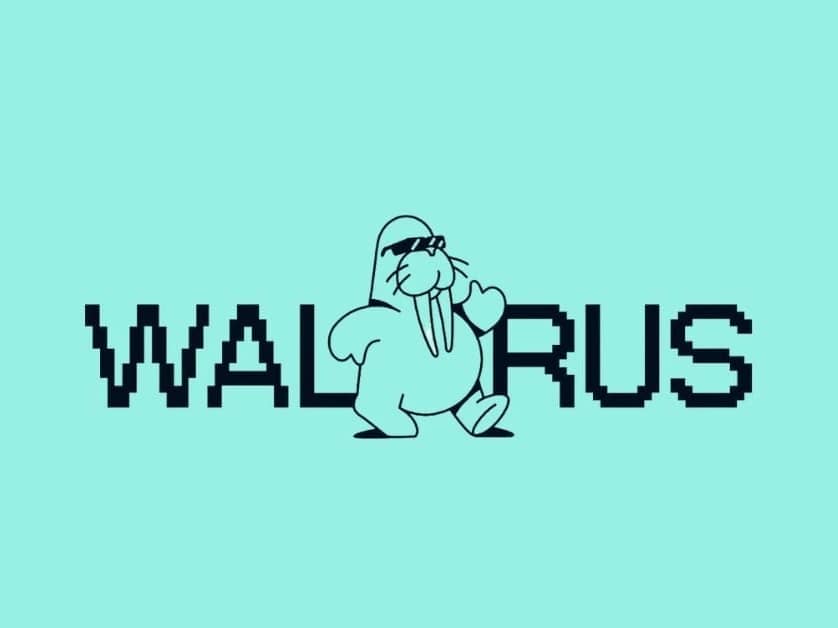Subscribe to wiki
Share wiki
Bookmark
Walrus Protocol
The Agent Tokenization Platform (ATP):Build autonomous agents with the Agent Development Kit (ADK)
Walrus Protocol
Walrus is a decentralized data storage protocol built on the Sui blockchain that enables applications to publish, read, and program large data files through Move-based smart contracts. It transforms storage into an interactive, programmable resource that supports the entire data management lifecycle. [1] [3] [5]
Overview
Walrus is a decentralized storage and data availability protocol built on the Sui blockchain and governed by the Walrus Foundation. It enables applications to store and manage large files—such as images, game assets, AI datasets, or websites—by breaking them into shards distributed across a peer-to-peer network of storage nodes. Each stored file is a Sui object, allowing smart contracts to interact with, manage, or automate data operations directly on-chain. Walrus uses RedStuff erasure coding for efficient and resilient storage, ensuring that files can be reconstructed even when some shards are unavailable. While metadata and control logic are handled on Sui, the chain-agnostic storage layer makes Walrus accessible to applications across various blockchain ecosystems. The protocol is permissionless, supports staking via the WAL token, and is fully programmable using Move, making it suitable for building custom storage logic or integrating with broader Web3 infrastructure. [1] [2] [3]
Walrus Foundation
The Walrus Foundation oversees the development, maintenance, and overall direction of the Walrus protocol and its associated cryptocurrency. Its roles include managing protocol updates, fostering community growth, handling the ecosystem fund, forming strategic partnerships, and supporting research and innovation. The foundation’s broader goal is to promote the adoption of programmable storage across industries and assist developers in building on the protocol.
Walrus is an alternative to traditional cloud storage that combines blockchain infrastructure with decentralized data distribution. As the ecosystem grows, it contributes to decentralized storage and data management advancements by offering tools tailored to Web3 environments.
Within the broader decentralized storage sector, Walrus competes with other projects offering similar services through varying technical models. While the space includes a range of solutions, Walrus distinguishes itself through its programmable architecture and integration with the Sui blockchain.
By focusing on smart contract functionality and dynamic data handling, Walrus targets applications that require automated data workflows and more flexible storage systems. This approach positions the protocol to meet the needs of developers building complex, data-driven decentralized applications. [1] [4]
Technology
Walrus uses a hybrid architecture that combines blockchain technology with peer-to-peer networking to deliver decentralized storage services. Data is encrypted and distributed across multiple nodes, minimizing reliance on any single point and increasing resilience. Smart contracts automate storage agreements, enforce protocol rules, and handle transactions, enabling efficient and scalable data storage operations.
Built on the Sui blockchain, Walrus uses Move-based smart contracts to secure and programmatically manage data files, or blobs. This approach enables advanced functionality throughout the entire data lifecycle, including modification, tracking, and integration with decentralized applications.
Rather than simply storing and retrieving data, Walrus treats storage as a programmable resource. This design allows for dynamic data interactions, automated workflows via smart contracts, and compatibility with financial and blockchain-based services. It supports on-chain and off-chain data storage, offering flexibility for various use cases and ensuring reliable data management from upload to deletion or archiving. By making storage interactive and programmable, Walrus aims to support the growing demand for flexible and verifiable data solutions, particularly as more industries adopt decentralized infrastructure. [1] [4] [3] [2]
WAL
The WAL token is the native utility token of the Walrus decentralized storage network, used to facilitate payments, security, and governance. For storage, users pay with WAL to store data for a fixed duration, with payments distributed over time to compensate storage nodes and stakers. To stabilize storage costs, the protocol is designed to insulate pricing from WAL’s market volatility, and early-stage subsidies are provided to support adoption while maintaining viable incentives for node operators.
WAL also supports network security through delegated staking, allowing users to back storage nodes and earn rewards based on node performance. Plans include slashing to penalize misbehavior and aligning incentives across participants. In governance, WAL holders vote on protocol parameters—such as penalties—based on their staked tokens, giving nodes control over system adjustments that affect operational fairness and efficiency. [5]
Tokenomics
WAL has a total supply of 5B tokens and has the following distribution: [5]
- Community Reserve: 43%
- Core Contributors: 30%
- Subsidies: 10%
- Walrus User Drop: 10%
- Investors: 7%
Funding and Investors
In early 2025, the Walrus Foundation completed a significant fundraising round, securing $140 million in a private token sale. This funding round was led by Standard Crypto and included participation from several prominent investors in the blockchain and venture capital space. [1]
Key Investors
- Standard Crypto (Lead investor)
- a16z crypto
- Electric Capital
- Creditcoin
- Lvna Capital
- Protagonist
- Franklin Templeton Digital Assets
- Karatage
- RW3 Ventures
- Comma3 Ventures
- The Raptor Group
Partnerships
- IO.net
- SEAL
- Tusky
- Unchained
- Pudgy Penguins
- Crossmint
- Webacy
See something wrong?
The Agent Tokenization Platform (ATP):Build autonomous agents with the Agent Development Kit (ADK)
